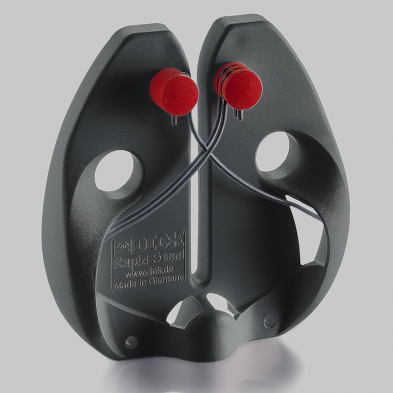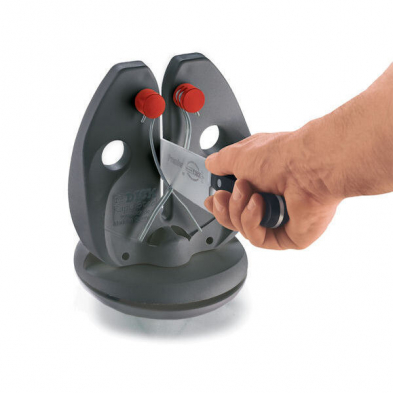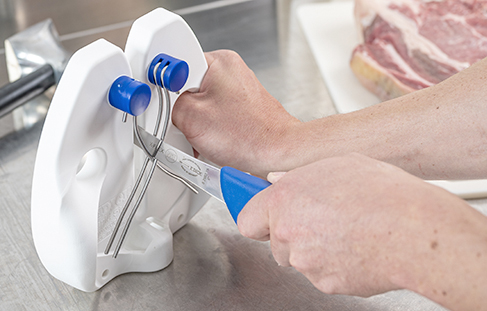
Knife sharpening is an art as much as it is a necessity. For chefs and home cooks alike, a sharp knife isn't just a tool- it's an extension of their hand. While sharpening steel has long been the go-to for maintaining a knife's edge, the world of knife sharpeners offers many benefits that are hard to ignore. This guide delves into the advantages of knife sharpeners, comparing them with traditional sharpening steels, and introduces you to the world of magneto steel, master steel, silver steel, and rapid steel.
Why Consider Knife Sharpeners?
The evolution of kitchen tools has always been about efficiency and precision. With their innovative designs and materials, Knife sharpeners represent the next step in this evolution. Unlike the traditional sharpening steel, which realigns the edge of a blade, knife sharpeners can both realign and remove material, ensuring a sharper edge for longer.
Moreover, knife sharpeners are often more user-friendly, especially for beginners. The risk of misusing a sharpening steel can lead to a dulled or damaged blade. In contrast, many knife sharpeners come with guided angles and easy-to-use mechanisms that take the guesswork out of the sharpening process.
The versatility of knife sharpeners is another compelling reason to consider them. From pocket knives to cleavers, there's a knife sharpener designed to handle it. This versatility extends to the types of sharpening mechanisms available, from whetstones to electric sharpeners.
Lastly, the efficiency of knife sharpeners is unparalleled. With a few swipes, your knife can be restored to its former glory, saving time and ensuring consistent results.
Deep Dive into Knife Sharpeners
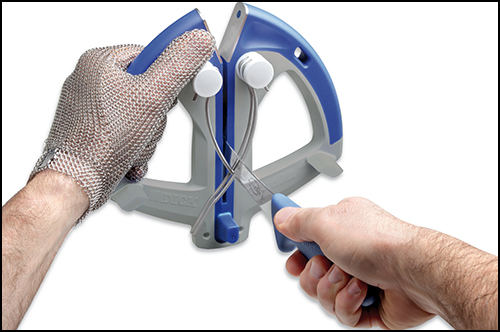
Magneto steel sharpeners are a marvel in the knife sharpening world. They use magnetic force to attract the metal filings that come off the knife, ensuring a clean sharpening experience. This not only maintains the hygiene of your workspace but also ensures that the blade is sharpened uniformly.
The design of magneto steel sharpeners is ergonomic, making them comfortable to use. Their compact size makes them a perfect fit for any kitchen, and their efficiency is evident in the razor-sharp edge they provide to knives.
Furthermore, magneto steel sharpeners are durable. Made with high-quality materials, they are designed to withstand the test of time, making them a worthy investment for professional chefs and home cooks.
Lastly, the safety features incorporated into magneto steel sharpeners, such as non-slip bases, ensure you can sharpen your knives without mishaps.
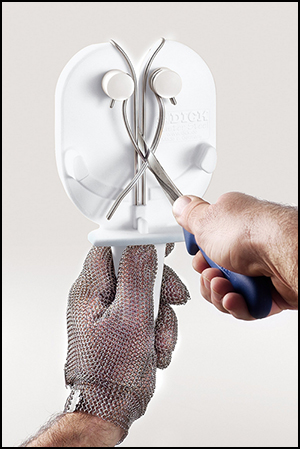
Master steel sharpeners are the epitome of precision. Designed for those who demand nothing but the best for their knives, these sharpeners offer a sharpening experience. Their unique design ensures the knife is held at the optimal angle, providing a consistent edge every time.
The materials used in master steel sharpeners are of the highest quality. This not only ensures durability but also provides a smooth sharpening experience. The result is a knife that glides through ingredients with ease.
For those who value aesthetics, master steel sharpeners are a sight to behold. Their sleek design, combined with their efficiency, makes them a must-have for any kitchen.
In terms of maintenance, master steel sharpeners are easy to clean. Their design ensures that metal filings are easily accessible, making cleaning a breeze.
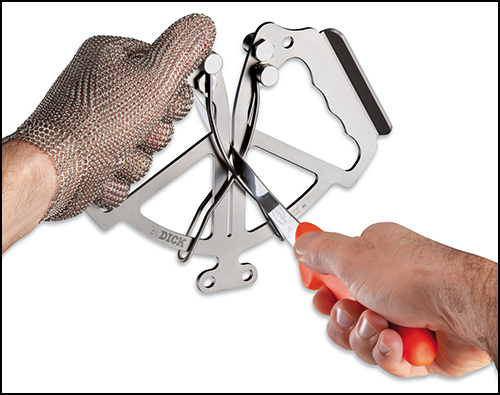
Silver steel sharpeners are not just tools; they are a statement. Their elegant design, combined with their unparalleled efficiency, makes them a favorite among chefs worldwide. Made with traditional craftsmanship and modern technology, these sharpeners are a testament to the art of knife sharpening.
The sharpening mechanism of silver steel sharpeners is gentle yet effective. This ensures that the knife's edge is sharp and durable. The result is fewer trips to the sharpener and more time enjoying the culinary process.
Furthermore, silver steel sharpeners are versatile. Whether you're sharpening a paring knife or a cleaver, they can easily handle it. Their design ensures the blade is held securely, providing a consistent sharpening angle.
Lastly, the materials used in silver steel sharpeners are eco-friendly. This means you can sharpen your knives with a clear conscience, knowing you're doing your bit for the environment.
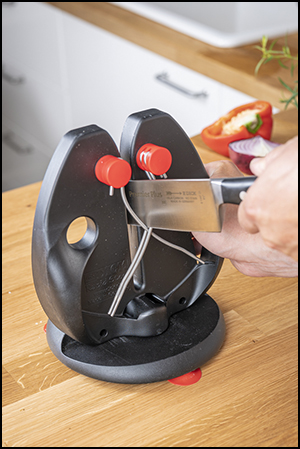
Rapid steel sharpeners are a godsend for those who are always on the go. As the name suggests, these sharpeners are designed for speed. With just a few swipes, your knife will be as sharp as the day you bought it.
The design of rapid steel sharpeners is compact, making them perfect for both home kitchens and professional setups. Their lightweight nature means they can be easily transported, ensuring you have a sharp knife wherever you go.
In terms of efficiency, rapid steel sharpeners are second to none. Their sharpening mechanism ensures the knife's edge is honed perfectly in record time.
Furthermore, rapid steel sharpeners are durable. Made with high-quality materials, they are designed to withstand the rigors of daily use. This makes them a worthy investment for anyone who values the art of knife sharpening.
Honing vs. Sharpening: Clearing the Confusion
The terms 'honing' and 'sharpening' are often used interchangeably but refer to two distinct processes. Honing involves realigning the edge of a knife without removing any material. Over time, with regular use, a knife's edge can become misaligned. Honing rods or steels are used to straighten this edge, ensuring optimal performance.
On the other hand, sharpening involves removing material from the knife to create a new edge. This is where knife sharpeners come into play. They not only realign the edge but also remove imperfections, ensuring a razor-sharp finish.
Understanding the difference between the two processes is essential to maintain your knives properly. While honing should be done regularly, sharpening can be less frequent, depending on the knife's usage.
Knife sharpeners offer the best of both worlds. They can hone and sharpen, ensuring your knife is always in top condition. This dual functionality is one of the many reasons knife sharpeners are becoming increasingly popular.
Furthermore, the precision offered by knife sharpeners ensures that the knife's edge is consistent. This not only improves the knife's performance but also extends its lifespan.
Lastly, the safety features incorporated into knife sharpeners, such as guided angles and non-slip bases, ensure the sharpening process is safe and efficient.
How to Use Knife Sharpeners
Using a knife sharpener might seem daunting, but it becomes second nature with some practice. The first step is to choose a suitable sharpener for your knife. Whether magneto steel, master steel, silver steel, or rapid steel, each has unique features that cater to different needs.
Once you've chosen your sharpener, place it on a stable surface. Many sharpeners come with non-slip bases to ensure stability. Hold the knife by its handle, with the edge facing away from you.
Please start at the base of the knife and pull it towards you, ensuring that the entire edge comes into contact with the sharpener. Repeat this process a few times, checking the sharpness after each pass.
Use the sharpener's serrated edge setting for knives with serrated edges, if available. This ensures that each serration is sharpened individually, maintaining the knife's integrity.
It's essential to clean the sharpener after each use. This maintains its efficiency and ensures the longevity of both the sharpener and the knife.
Lastly, always store your sharpener in a dry place, away from children's reach. This ensures safety and maintains the sharpener's condition.
Frequently Asked Questions:
-
What's the primary difference between knife sharpeners and steel sharpeners?
Knife sharpeners typically remove material to create a new edge, while steel sharpeners, also known as honing steels, realign the existing edge without removing material.
-
How often should I use a knife sharpener compared to a honing steel?
Knife sharpeners are used less frequently, perhaps once every few months depending on knife usage, while honing steels should be used regularly, even after each use, to maintain the knife's edge.
-
Are knife sharpeners suitable for all types of knives?
Most knife sharpeners are versatile and can handle a variety of knives, but it's essential to check the manufacturer's recommendations to ensure compatibility with specific knife types.
-
Which lasts longer: a knife maintained with a sharpener or one maintained with a honing steel?
Both tools, when used correctly, can extend the life of a knife. However, a knife maintained with a sharpener might require less frequent sharpening sessions than one maintained solely with a honing steel.
-
Is it safe to use knife sharpeners for beginners?
Yes, many knife sharpeners are designed to be user-friendly and come with safety features like guided angles and non-slip bases, making them suitable for beginners.
-
How do electric knife sharpeners compare to manual ones?
Electric knife sharpeners are faster and often provide more consistent results, while manual sharpeners offer more control and are portable.
-
Can I use a knife sharpener for serrated knives?
Yes, but it's essential to use a sharpener designed or equipped with a setting for serrated knives to ensure each serration is sharpened individually.
-
What materials are commonly used in knife sharpeners?
Knife sharpeners often use materials like diamond, ceramic, tungsten carbide, and natural or synthetic whetstones.
-
How do I clean and maintain my knife sharpener?
Most knife sharpeners can be cleaned with a damp cloth. Ensure they are dried thoroughly before storing. Always refer to the manufacturer's instructions for specific maintenance tips.
-
Why do some chefs prefer honing steels over knife sharpeners?
Some chefs prefer the precision and control of honing steels, especially when they need to realign the edge quickly without removing material. It's often a matter of personal preference and the specific needs of the task at hand.
Reflecting on the Benefits
Knife sharpeners are revolutionizing the way we maintain our knives. Their efficiency, combined with their user-friendly design, makes them a must-have for any kitchen. Whether you're a professional chef or a home cook, the benefits of knife sharpeners are hard to ignore.
By understanding the difference between honing and sharpening and choosing the right sharpener for your needs, you can ensure that your knives are always in top condition. So, the next time you find your knife lacking its edge, reach for a knife sharpener and experience the difference.


